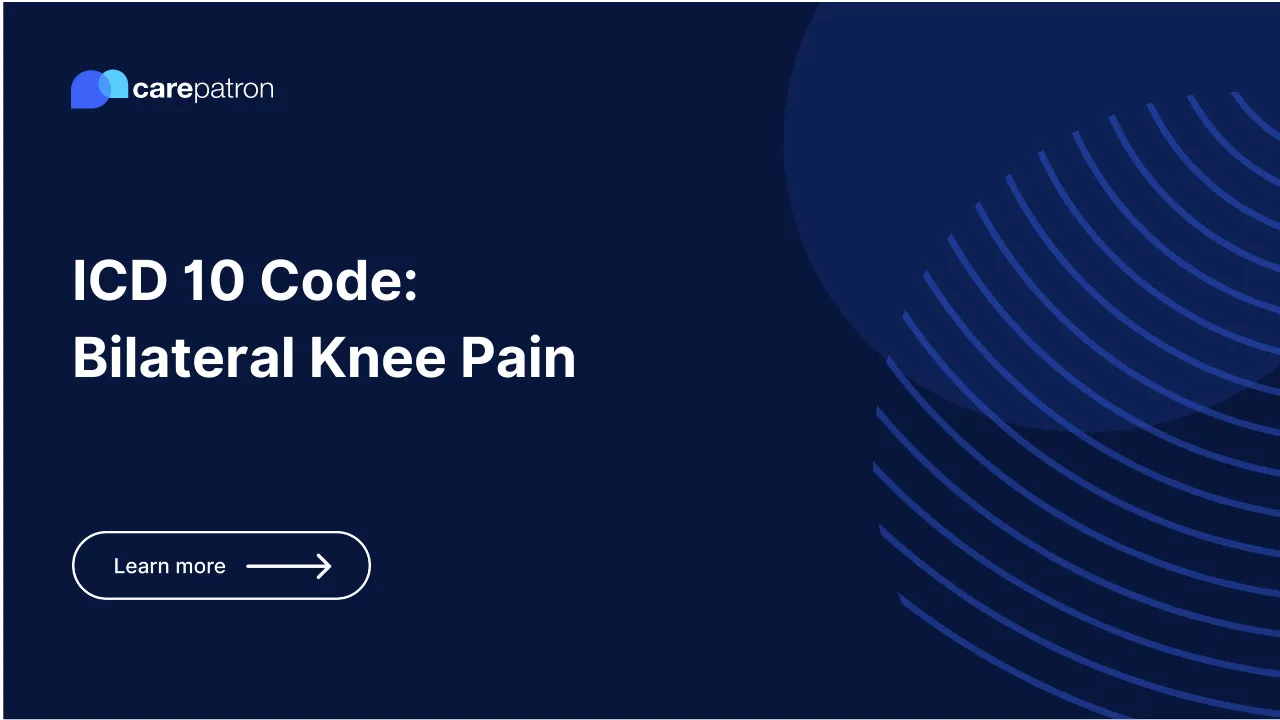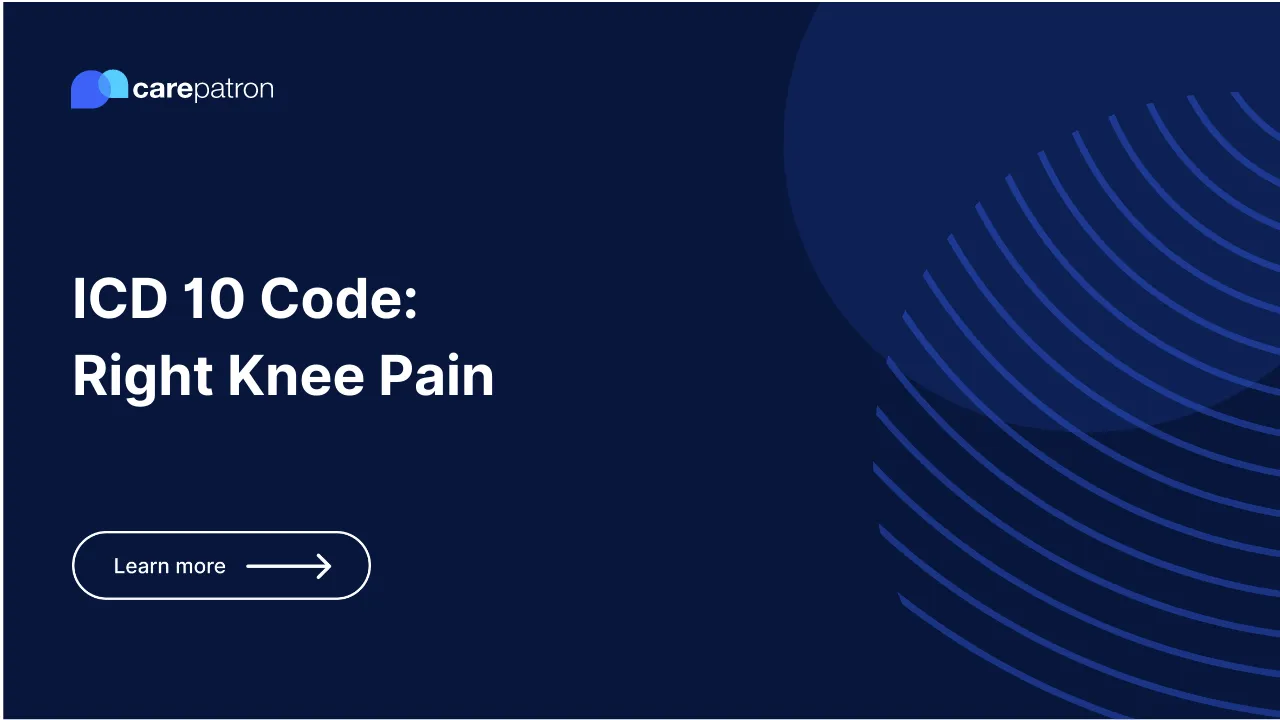Low Back Pain ICD-10-CM Codes | 2023
Discover the various ICD-10 codes used for diagnosing Low Back Pain. These codes help accurately document, treat, and bill for low back pain conditions.

What ICD-10 Codes are Used for Low Back Pain?
ICD-10 codes are an essential part of the healthcare system medical professionals worldwide use to diagnose, record, and report diseases, symptoms, and procedures. In the context of low back pain, several specific ICD-10 codes come into play:
- M54.5 - Low Back Pain: This code was formerly used for general or unspecified low back pain. However, as of October 2021, it has been replaced with more specific codes to enhance diagnostic precision and treatment planning.
- M54.50 - Low Back Pain, Unspecified: This code is now used when the origin or cause of the low back pain isn't identified or specified in the patient's medical record. It's a catch-all code for low back pain without a clearly defined source.
- M54.51 - Vertebrogenic Low Back Pain: This code is utilized when the low back pain is determined to originate from the vertebrae. This includes conditions where the vertebrae structure itself is causing discomfort or pain.
- M54.59 - Other Low Back Pain: This code encapsulates other types of low back pain that do not fall under the categories defined by the other codes. This could include pain resulting from non-vertebral and non-muscular sources.
- S39.012 - Strain of Muscle, Fascia, and Tendon of Lower Back: This code is employed when low back pain is due to a strain or injury to the lower back muscle, fascia, or tendon. This is commonly seen in patients with acute injuries or those involved in physically demanding activities.
- M51 - Thoracic, Thoracolumbar, and Lumbosacral Intervertebral Disc Disorders: This code is applied when the low back pain is related to disorders of the intervertebral discs, such as herniation, degeneration, or displacement.
These codes allow for more accurate diagnosis, treatment planning, billing, and research. Understanding these Low Back Pain ICD Codes is crucial for any medical professional diagnosing or treating back-related conditions.
For a comprehensive understanding of these codes, consider watching this explainer video on the topic.
Which Low Back Pain ICD codes are Billable?
ICD-10 codes are not just used for diagnosing conditions but also for billing purposes. Here's a look at whether the commonly used codes for low back pain are billable:
- M54.5 - Low Back Pain: No. This code is no longer in use as of October 2021.
- M54.50 - Low Back Pain, Unspecified: Yes. This code can be used for billing when the cause of the low back pain is unspecified.
- M54.51 - Vertebrogenic Low Back Pain: Yes. This code can be billed when the source of the low back pain is from the vertebrae.
- M54.59 - Other Low Back Pain: Yes. This code is billable and covers other types of low back pain that aren't specified by other codes.
- S39.012 - Strain of Muscle, Fascia, and Tendon of Lower Back: Yes. This code can be used for billing when the low back pain is due to a strain of the lower back muscle, fascia, or tendon.
- M51 - Thoracic, Thoracolumbar, and Lumbosacral Intervertebral Disc Disorders: Yes. This code is billable and is used when low back pain is related to intervertebral disc disorders.
Clinical Information
- The now obsolete M54.5 code once provided a broad umbrella for various non-specific low back pain symptoms. It was a catch-all for lumbago or low backache instances where no specific diagnosis could be determined.
- The current go-to code for undetermined causes of low back pain is M54.50. This code steps in when patients exhibit symptoms of low back pain, but the medical team has yet to identify the underlying condition causing this discomfort.
- When low back pain can be traced back to issues with the vertebrae, M54.51, known as Vertebrogenic Low Back Pain, is the code used. It encompasses conditions like vertebral osteoarthritis, fractures, deformities, or other spine-related abnormalities.
- M54.59 is a flexible code that captures Other Low Back Pain not covered by other categories. This includes postural back pain, pain related to systemic diseases like fibromyalgia, or pain lacking a clear mechanical or vertebral source.
- For back pain resulting from an injury or strain to the muscle, fascia, or tendon in the lower back, S39.012 is utilized. This code covers a range of causes, including heavy lifting, sudden movements, accidents, and overuse injuries.
- M51 covers Thoracic, Thoracolumbar, and Lumbosacral Intervertebral Disc Disorders. This code is applied when low back pain results from disorders of the intervertebral discs. Conditions under this category could involve disc herniation, degeneration, or displacement.
- It's essential to remember that these codes are not just labels but crucial tools for accurate clinical documentation and treatment planning.
- Always refer to the latest ICD-10 manual to ensure the use of the most current and precise codes. Staying updated helps maintain the accuracy and effectiveness of patient diagnoses and treatments.
Commonly asked questions
A Low Back Pain ICD code should be used when documenting a patient's diagnosis during a medical visit. These codes help accurately record and track the prevalence of different types of low back pain, which can aid in research, epidemiology, and insurance claims.
Yes, Low Back Pain diagnosis codes are billable. These codes are used by healthcare providers to submit claims to insurance companies for reimbursement. However, the specific coverage and reimbursement may depend on the patient's insurance plan.
The treatments for Low Back Pain can vary based on the specific diagnosis code. Typically, they may include physical therapy, medication, lifestyle changes like exercise and diet, or in some cases, surgery. It's always best to consult a healthcare provider for an accurate treatment plan.
A diagnosis code for Low Back Pain provides a standardized definition of the condition for consistent documentation and communication among healthcare providers. Each code corresponds to a specific type of low back pain, and these codes are used globally to classify and track diseases and health conditions.


.png)




.webp)
.webp)
.webp)
.webp)
.webp)
.webp)
.webp)
.webp)
.webp)
.webp)
.webp)
.webp)
.webp)
.webp)
.webp)
.webp)
.webp)
.webp)
%2520(1).webp)
.webp)
.webp)
.webp)
.webp)
.webp)
.webp)
.webp)
.webp)
.webp)
.webp)
.webp)
.webp)
.webp)
.webp)
.webp)
%2520(1).webp)
.webp)
.webp)
.webp)
.webp)
.webp)
.webp)
.webp)
.webp)
.webp)
.webp)
.webp)
.webp)
.webp)
.webp)
.webp)
.webp)
.webp)
.webp)
.webp)
.webp)
.webp)
.webp)
.webp)
.webp)
.webp)
.webp)
.webp)
.webp)
.webp)
.webp)
.webp)
.webp)
.webp)
.webp)

.webp)
.webp)
.webp)
.webp)
.webp)












.webp)
.webp)




.webp)


